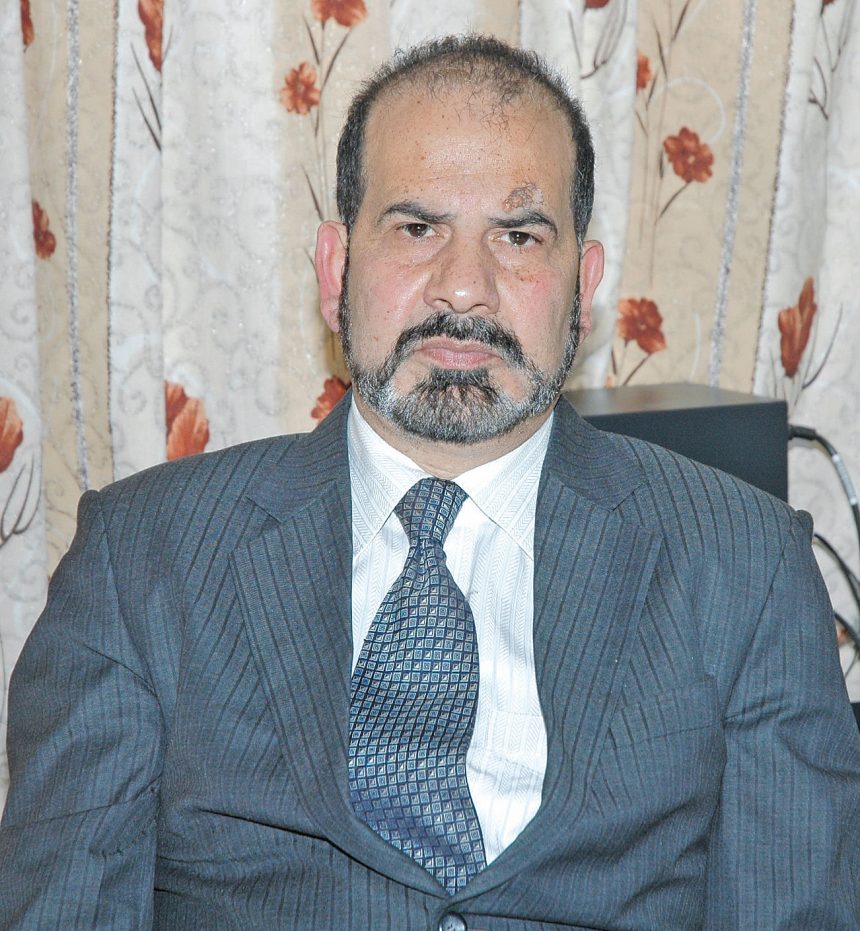In an exclusive and deeply engaging conversation, Khwaja Farooq Renzushah, a distinguished scholar and author, speaks to Rising Kashmir’s Chief Reporter, Irfan Yattoo, to discuss his recent research on one of the most formidable yet overlooked figures in Kashmir’s history—Sultana Kota Rani. His latest book, Sultana Kota Rani Reshi Queen of Kashmir, sheds light on the indomitable queen’s leadership, resilience, and spiritual vision during the 14th century. Through this thought-provoking dialogue, Renzushah not only unearths forgotten chapters of Kashmir’s past but also challenges historical narratives that have long obscured Kota Rani’s legacy.
What made Sultana Kota Rani an enduring icon of resistance? How did she navigate treachery and warfare to uphold Kashmir’s composite identity? And why does her story remain as relevant today as it was centuries ago? Khwaja Farooq Renzushah discusses these questions in this interview. EXCERPTS
Your new book, Sultana Kota Rani Reshi Queen of Kashmir, has generated significant interest. What inspired you to delve into the life of this 14th-century figure?
The sacrifices and unwavering dedication of Sultana Kota Rani during the crisis of 1319 A.D. were unparalleled. At a time when Kashmir’s civilization stood on the brink of annihilation, she emerged as a beacon of hope and resilience.
My research highlights how Kashmir was ravaged by Zulqader Khan Dalcha, a brutal invader from the Mongol lineage of Genghis Khan, and his commander Halqo Khan.
These forces set Kashmir ablaze, raping women, beheading newborns, and imprisoning both the Hindu and Buddhist populations. Yet, amidst this devastation, Sultana Kota Rani defied the odds and became the savior of Kashmir’s heritage and unity.
You have emphasised the critical period of 1319 A.D. Can you elaborate on the challenges she faced and how she overcame them?
My research underscores that the Renaissance of Kashmiriyat—the concept of unity among different faiths—was born out of this crisis. The then King of Kashmir, Suha Deva, fled in cowardice, abandoning his people.
His Prime Minister, blinded by greed, proved ineffective in defending Kashmir. In this moment of turmoil, a young and courageous Sultana Kota Rani rose to lead the resistance against tyranny.
Realizing the urgency of the situation, she sought support from Padmasambhava Rinchen Shah Gylson, a brave scholar-prince of Tibet, an adjoining region of Kashmir. Their historic meeting at the Khunjerab Pass in the Karakoram Mountains, along the Silk Route, sealed an alliance that would prove deadly for the invading forces.
Together, they engineered the strategic detonation of the Pir Panjal glaciers, triggering massive avalanches that buried Zulqader Khan Dalcha’s 70,000-strong cavalry, annihilating them completely.
The great Sufi saint Hazrat Abdul Rahman Bulbulshah, from the lineage of Abu Muslim Abdul Rahman Khurasani of the 8th century, also arrived in Kashmir during this period. A scholar of Tasawwuf (Sufi mysticism), he played a pivotal role in the spiritual upliftment of Kashmir.
He blessed Padmasambhava Rinchen Shah Gylson and Sultana Kota Rani for their victory, marking a turning point in Kashmir’s history. Their triumph fostered an unprecedented closeness between Hinduism, Buddhism, and Islam, uniting Kashmiris against tyranny.
Your book also details the eventual downfall of Sultana Kota Rani. What led to her tragic end?
The rise of Sultana Kota Rani and Sultan Sadr-ud-Din Rinchen Shah represented an era of cultural and spiritual renaissance in Kashmir.
However, their reign was short-lived due to the treachery of Shams Swati, a deceitful trader from Swat, who conspired to seize power. His betrayal led to the first martyrdom of Sultan Sadr-ud-Din Rinchen Shah and later, the overthrow of Sultana Kota Rani in 1339 A.D.
Forced into captivity, she was bridled in iron chains and presented before Shams Swati, who attempted to forcefully marry her. Rather than submit, Sultana Kota Rani used the very dagger (Khanjer) given to her at the Khunjerab Pass for self-defense and ended her own life.
In an act of ultimate defiance, she threw her intestines onto the face of Shams Swati, marking a powerful statement against tyranny and betrayal. Her sacrifice immortalized her as a symbol of Kashmir’s unity, wisdom, and resistance.
How did Kashmir evolve after Sultana Kota Rani’s killings, and what impact did her legacy have on future rulers?
The betrayal by Shams Swati led to the rise of his son, Junaid Swati, a drunkard and incompetent ruler, who was eventually lynched by the people of Kashmir.
In contrast, Alau-ud-Din Haider Shah, the son of Sultana Kota Rani and Sultan Sadr-ud-Din Rinchen Shah, became a wise ruler. His daughter, Sheeba Rani, married Prime Minister Kota Khan and later Sultan Sikandar, who, under the influence of radical elements like Wazir Seeh Batta, led one of the darkest periods of Kashmir’s history.
Sultan Sikandar and Wazir Seeh Batta orchestrated mass killings, creating an island of corpses near present-day Tulip Garden and Royal Golf Spring in Srinagar.
This genocide mirrored the barbaric tactics of ISIS and Wahhabi extremists in modern times. However, after 39 years of darkness, the tide turned when Zain-ul-Abidin Budshah, son of Sheeba Rani, reversed the damage done by his father.
He re-established Kashmir’s spiritual and intellectual heritage and honored Sultana Kota Rani by naming vital infrastructure, like Kota Koul flood channels, after her.
In contemporary times, how do you see Sultana Kota Rani’s legacy influencing the world?
Khwaja Farooq Renzushah: The Renaissance introduced by Sultana Kota Rani influenced global movements, including the French Renaissance. The Renaissance Cultural Abode in Michigan still stands as a testament to her legacy.
Even today, thousands of admirers on social media platforms like X (formerly Twitter), Instagram, and Facebook continue to acknowledge her as a true symbol of Kashmir’s composite culture.
Her commitment to secularism, spiritual enlightenment, and resilience remains an inspiration. The destruction of Sharda Peeth, the first university of wisdom, by Shams Swati in 1340 A.D. and later by Sultan Sikandar and Wazir Seeh Batta in 1501 A.D., was a tragedy.
However, it is imperative that this sacred site is revived. The Pakistani military must vacate its premises and restore Sharda Peeth as a center of knowledge and wisdom, as envisioned by Sultana Kota Rani.
Sultana Kota Rani was not just a queen, she was a spiritual warrior, a symbol of unity, and the embodiment of Kashmir’s resilience. Her legacy is a beacon for those who believe in harmony, wisdom, and the fight against tyranny.
What makes Sultana Kota Rani such an important historical figure in Kashmir’s past?
Khwaja Farooq Renzushah: Sultana Kota Rani was a visionary leader who emerged as a beacon of resistance against external threats. In 1319 A.D., when Zulqader Khan Dalcha and Halqo Khan invaded Kashmir, burning villages, massacring innocent people, and imprisoning both Hindus and Buddhists, Kota Rani stood firm. She demonstrated extraordinary leadership, uniting Kashmiris regardless of faith and forging an alliance with the brave scholar-prince of Tibet. Together, they engineered a strategic victory by triggering deadly avalanches in the Pir Panjal range, wiping out Dalcha’s invading cavalry. Her resilience and wisdom established the foundation of Kashmiriyat—an enduring spirit of cultural unity.
You mentioned that her reign played a significant role in shaping Kashmir’s secular values. Could you elaborate on that?
Absolutely. Sultana Kota Rani was not only a warrior but also a spiritual icon. She embraced and respected all faiths—Hinduism, Buddhism, and Islam—encouraging harmony among them.
Her alliance with Hazrat Abdul Rahman Bulbulshah, an Islamic scholar, and Padmasambhava Renchenshah, a Buddhist prince, symbolized her commitment to religious unity. She refused to be coerced into another marriage after Renchenshah’s assassination, choosing instead to sacrifice herself rather than compromise her dignity. Her martyrdom is a testament to her unwavering principles and selflessness.
Your book has gained widespread recognition. What key messages do you hope readers will take away from it?
The key message is that Kashmir has always been a land of knowledge, wisdom, and coexistence. Sultana Kota Rani’s story is not just about resistance but about the birth of a Renaissance that influenced the world.
Even the French Renaissance drew inspiration from such historical movements. Unfortunately, some later rulers, like Sultan Sikander, reversed her efforts by promoting radical ideologies, However, the strength of Renaissance values persevered through Budshah Zain-ul-Abideen, who revived Kashmiriyat and rebuilt temples, vihars, and khanqahs that had been destroyed.
Given the global interest in your research, how do you see the legacy of Sultana Kota Rani being recognized today?
The overwhelming response on platforms like Google, Instagram, X, and TikTok shows that the younger generation still respects figures who championed unity over division.
The Renaissance Building in Michigan stands as a tribute to such historical figures, emphasising their universal significance. My hope is that institutions like the Sharda Peeth Wisdom University, once the seat of ancient knowledge, can be revived to restore the lost glory of Kashmir’s intellectual heritage.







